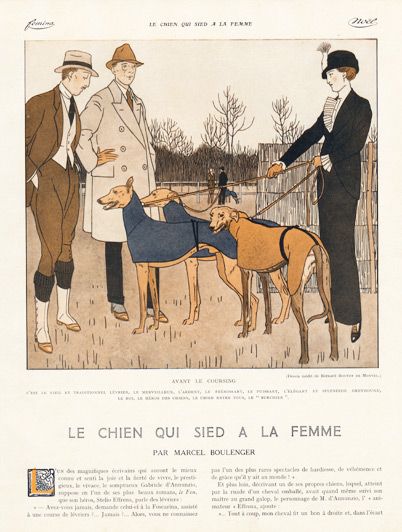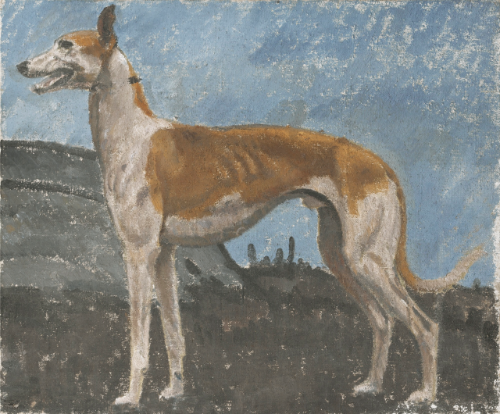9 August 1881 – 28 October 1949
Bernard Boutet de Monvel was a French painter, sculptor, printmaker, fashion illustrator and interior decorator. Although he was first known for his etchings, he gained notoriety for his paintings of him, particularly his geometric paintings from the 1900s and his Moroccan paintings made during the First World War. In both Europe and the United States, where he often traveled, he also became known as a portrait painter for high society clients.
In 1898 he was introduced to engraving by the American painter Louis McClellan Potter (1873-1912) and soon learned to master the technique. Boutet de Monvel focused on color engraving using the “au repérage” method, which required a separate plate for each color.
In 1904, after a trip to Florence, he suddenly switched to a pointillist style.
His 1908 self-portrait entitled The Portrait, which showed him in the Nemours countryside on a stormy day flanked by two greyhounds, earned him critical acclaim and an appointment as a member of the Société Nationale des Beaux-Arts.
In 1912, the Art Institute of Chicago dedicated a retrospective to his color prints.
His distinctive style helped him develop a path to the next style known as Art Deco. Working with refined geometric linearity, he reduced his palette to black and some grays and earth tones treated as spot colors. He also tended to draw from a low perspective angle to accentuate the monumentality of his subjects.
He has also contributed illustrations, particularly fashion drawings, to magazines such as Fémina, Jardin des modes nouvelles and Gazette du Bon Ton. Among those he worked closely with were the fashion designer Paul Poiret, who was an early admirer of his talent, and the illustrator Georges Barbier, who were co-founders of the Journal des Dames et des Modes.
During a trip between Paris and New York in 1949, he was killed when his plane crashed on the island of Sao Miguel in the Azores.













